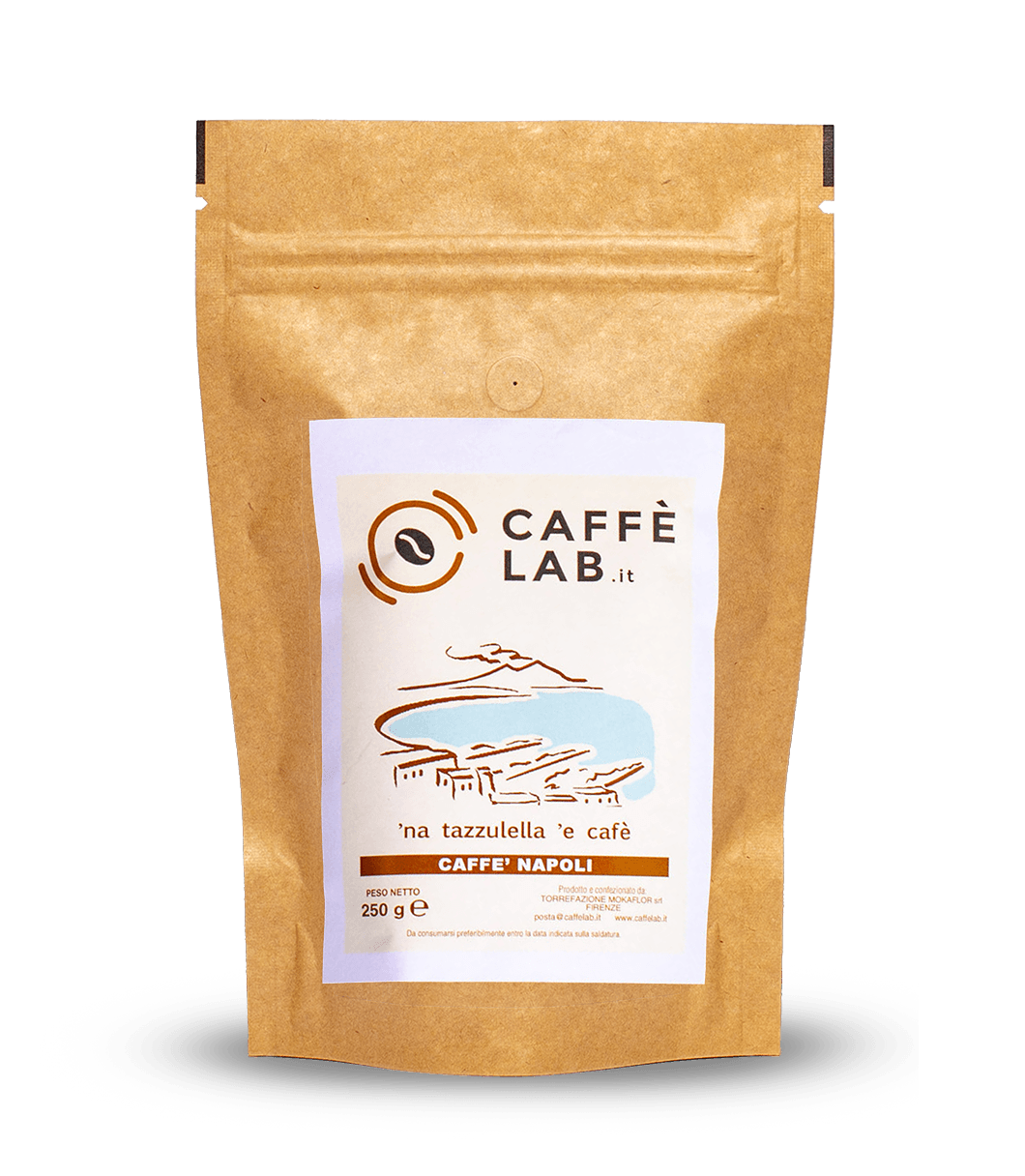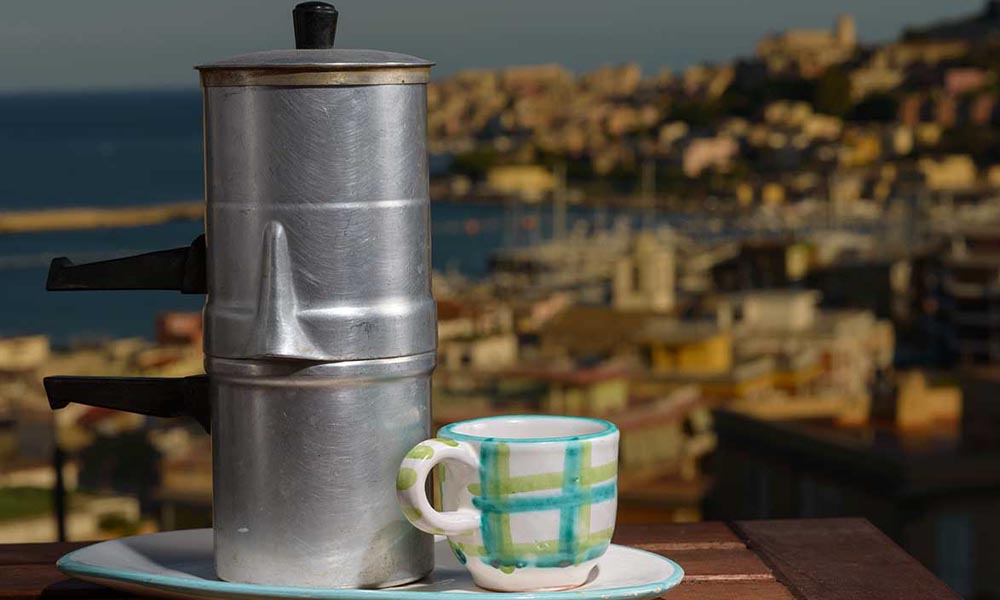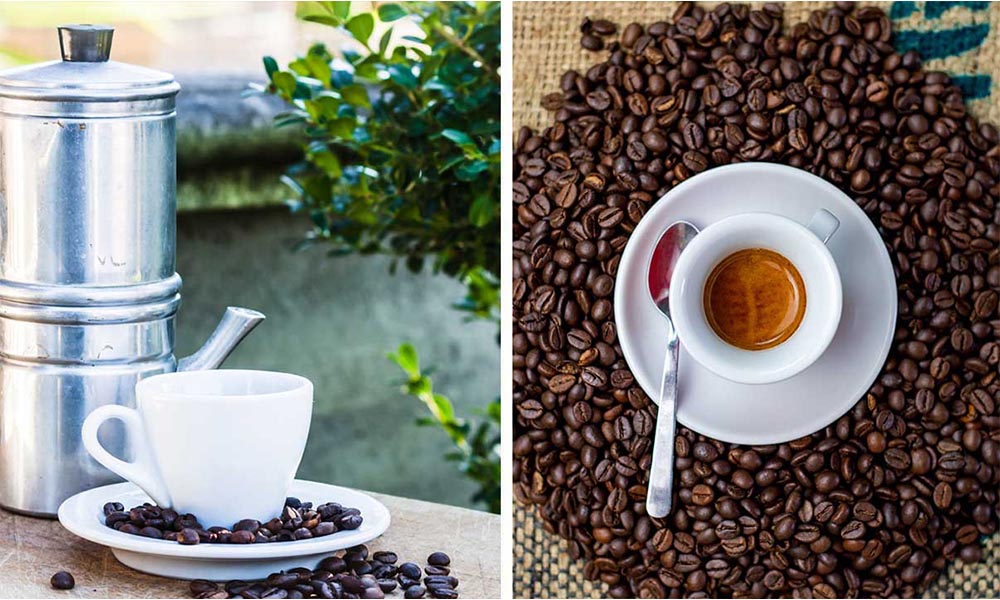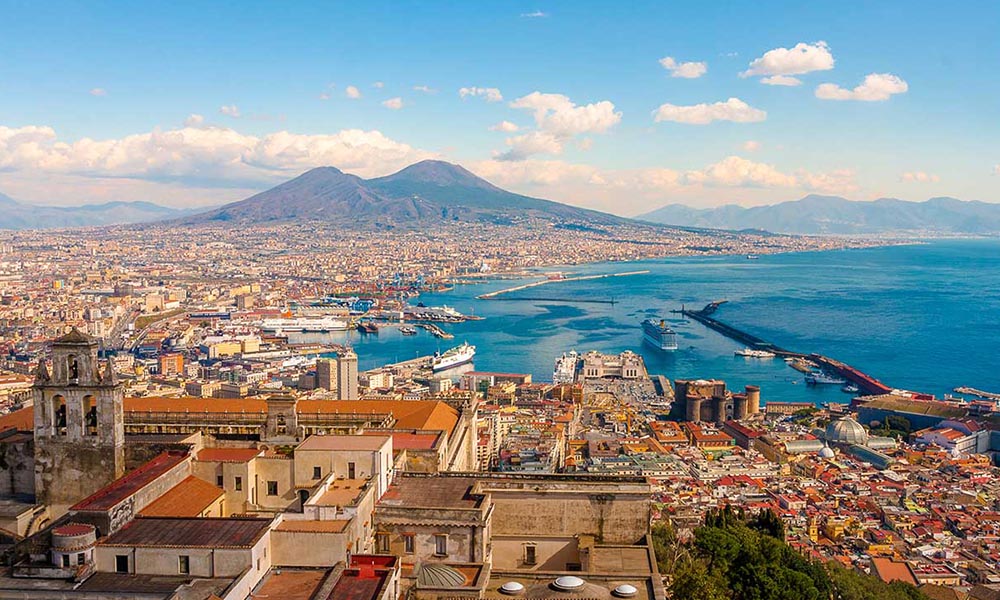
Neapolitan coffee blend
'na tazzulella


One of the most iconic sketches by Eduardo De Filippo, one of the greatest Italian playwrights, shows him standing on his balcony, waiting for the coffee in his cuccumella – the Neapolitan moka pot – to be ready. As he waits, he chats with his neighbour across the balcony about the joy of making one’s own coffee (even going as far as roasting the beans himself): a moment of poetry, he says, that gives those who practise it “a certain peace of mind.”
As he extols the happiness of taking a break while sipping a fine coffee, he describes in great detail his personal way of preparing this historic brewing method, a symbol of Neapolitan and Italian culture: the cuccumella napoletana.
The story of coffee in Naples begins in the 1700s, when the coffee trade started to spread across Europe. Naples, being an important port city, quickly became a hub for the import of coffee blends. Before long, the city’s narrow streets began to see the first shops popping up to sell it. In fact, the very first Italian “coffee shop” was opened in Naples, where roasted coffee beans were sold.
Initially, coffee was considered something of a luxury, mostly found in cafés and bars. But as its popularity grew, Neapolitan craftsmen began producing the first copper coffee pots, affectionately known as cuccumelle (a diminutive of cuccuma, meaning a vessel made of copper or terracotta). These were handmade and characterised by their teardrop shape, with a spout and a wooden handle. From the late 1800s, aluminium became the material of choice, reducing production costs and allowing coffee to become a daily ritual within households.

The way it works is different from the classic moka pot. You might think of it as the “Italian version of filter coffee”, as it doesn’t rely on steam pressure to push the water through the coffee grounds, but instead on gravity alone.
To start, fill the lower chamber (the side without the spout) with water. Take the filter basket and fill it with high-quality ground coffee – ideally a single origin or specialty coffee with a coarser grind than what you’d use for a moka pot. Screw the filter in and insert it into the top part (the one with the spout). Then join the two sections and place it on the hob.

Once the water reaches boiling point, steam will begin to escape from the small hole in the water chamber. That’s your cue to turn off the heat and flip the coffee pot upside down. The extraction begins. If you prefer a less bitter cup, you can start the process a few seconds before it reaches boiling point. Even better, fill the chamber with water pre-heated to 92–96°C, or place only the water chamber over the flame to reduce the contact between the ground coffee and high temperatures, which can scorch the grounds.
The Neapolitan coffee ritual ends with the coffee being poured into a traditional Neapolitan cup – short, flared, wide, and extra thick – designed to let you enjoy the coffee at its best.

Here at Caffelab, we’ve crafted a blend that’s perfect for anyone wanting to try this truly Made in Italy brewing method. It’s a classic blend, with a bold, creamy, and full-bodied flavour – Italian coffee at its finest for a truly unforgettable experience.
This Neapolitan Coffee Blend was created specifically to be the star of this cherished Neapolitan coffee ceremony, offering a rich aroma, a syrupy body, and a strong, lingering flavour.